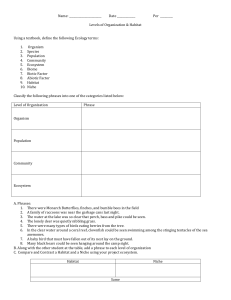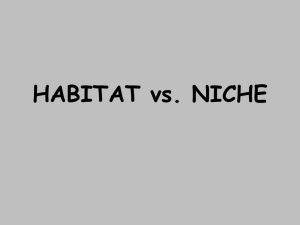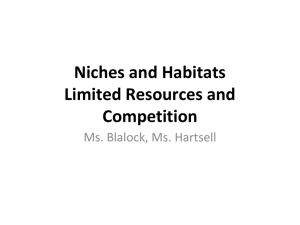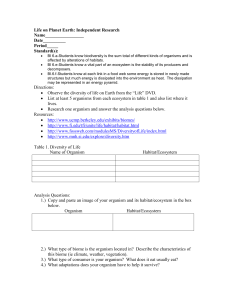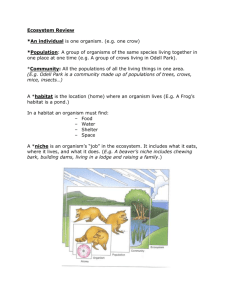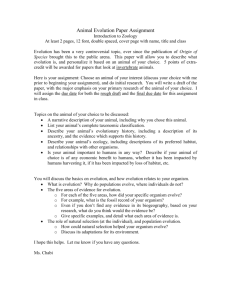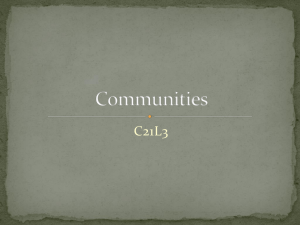Interactions Among Living Things: Ecology Vocabulary
advertisement
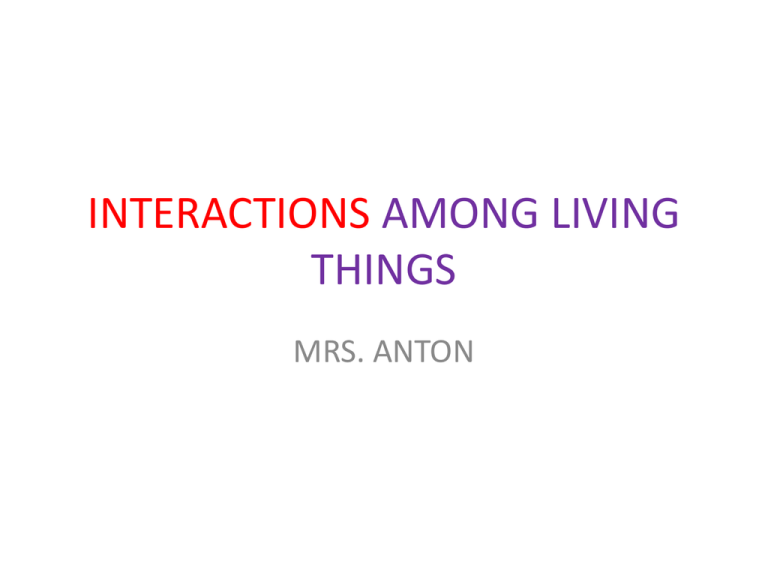
INTERACTIONS AMONG LIVING THINGS MRS. ANTON VOCABULARY • Habitat - The place where an organism lives. A habitat is often thought of as the organism's address. Examples: A lion’s habitat is a savanna. A monkey’s habitat is a rain forest. A cactus’s habitat is in the desert. • Niche - An organism’s way of life. A niche is considered to be an organism’s occupation. Examples: A lion’s niche includes where and how it finds shelter and food, when and how often it reproduces, how it relates to other animals, etc. • Ecosystem - All the living organisms in a given area as well as their physical environment -- usually made up of many complex interactions. VOCABULARY • Abiotic factors - Non-living parts of an ecosystem. Examples: caves, rain and other water sources, minerals, etc. • Biotic factors - The living parts of an ecosystem. Examples: animals, plants, insects, sponges, fish, etc. • Biome - A geographic area characterized by specific plants and animals. • Predation - An interaction where one species consumes another. VOCABULARY • Population - All species that live in an area, make up a breeding group. • Community - All populations in a given area. • Predator - An organism that feeds off of other organisms. • Prey - An organism that is consumed by another organism. • Competition - An interaction among living things where two populations compete for the same resources and territory. VOCABULARY • Parasitism - An interaction among living things where one species benefits from the expense of another. • Mutualism - An interaction among living things where both species benefit from the relationship. • Commensalism - An interaction among two living things where one species benefits from the relationship and the other is not affected
